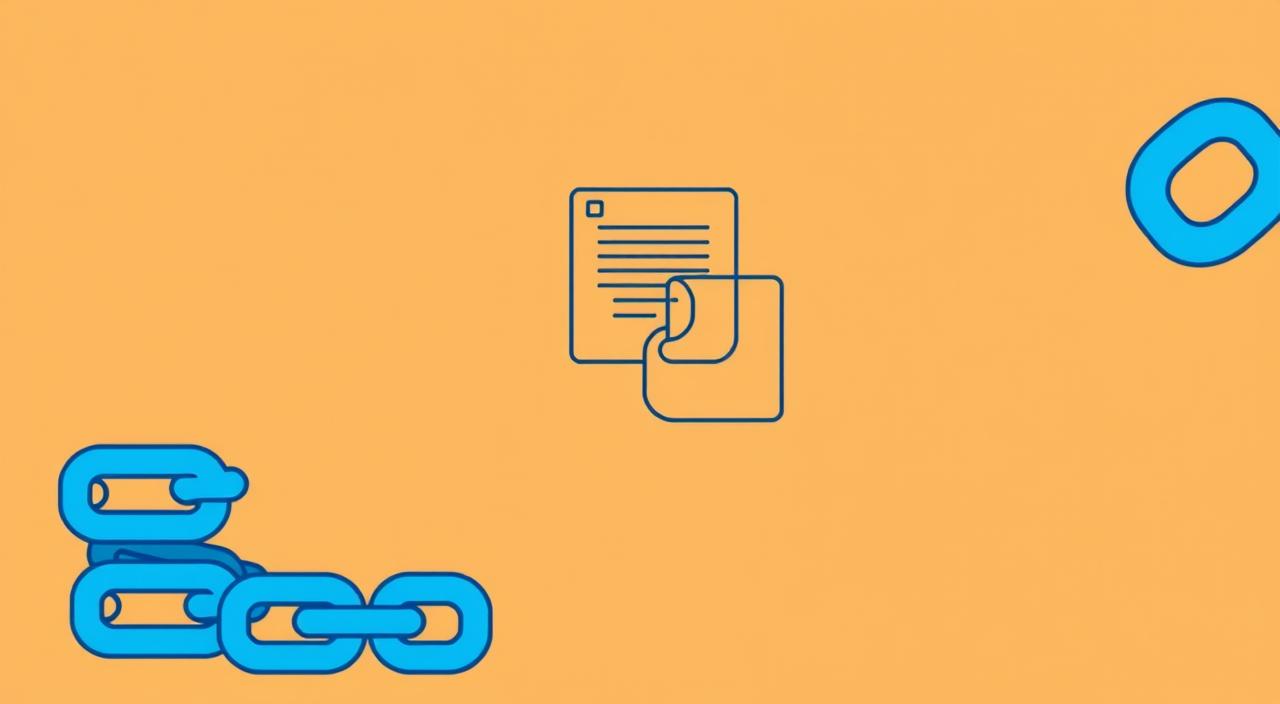In the ever-evolving world of SEO, link building remains a cornerstone of success. Google’s algorithms continue to prioritize high-quality links, making them essential for improving your website’s visibility. Recent updates, like the March 2024 algorithm change, have further emphasized the need for ethical and strategic link acquisition.
According to industry data, 72% of marketers agree that link building significantly impacts search rankings. However, with the average cost of a quality backlink reaching $352.93, finding cost-effective solutions is crucial. This guide will explore how to navigate the 2025 landscape of paid link acquisition while staying budget-conscious.
From case studies by Adsy, Collaborator, and Links Management, you’ll discover actionable strategies to enhance your SEO efforts. Whether you’re a seasoned marketer or just starting, this guide will help you build a robust link profile without breaking the bank.
What Are Cheap Backlinks and Why Do They Matter?
For businesses aiming to improve their search rankings, cost-effective solutions are essential. Backlinks remain a cornerstone of SEO, but not all strategies require a hefty budget. Understanding the role of backlinks and how to acquire them affordably can make a significant difference in your website’s performance.
Understanding the Role of Backlinks in SEO
Backlinks act as votes of confidence from other websites, signaling to search engines that your content is valuable. The more high-quality links you have, the better your site’s authority and ranking potential. However, acquiring these links can be challenging, especially for small businesses with limited resources.
Why Cheap Backlinks Can Be a Game-Changer
Affordable link-building strategies can level the playing field for smaller businesses. For example, a $25 link from Adsy might deliver similar traffic benefits as a $150 placement from a premium provider. The key is to focus on niche relevance and domain authority to maximize ROI.
Platforms like Collaborator.pro offer access to a network of 33,000 sites, making it easier to find targeted placements. By leveraging tiered link-building strategies, businesses can scale their efforts without overspending. It’s also important to debunk the myth that affordability equates to low quality—many budget-friendly options deliver excellent results.
According to recent data, 68% of small businesses use paid backlinks due to limited outreach resources. This highlights the growing demand for cost-effective solutions that don’t compromise on quality. By prioritizing smart investments, businesses can boost their domain authority and drive more traffic to their sites.
The Benefits of Investing in Cheap Backlinks
Building a strong online presence doesn’t have to drain your budget. Strategic link acquisition can enhance your site’s performance while keeping costs manageable. This approach not only improves your rankings but also strengthens your overall profile in the eyes of search engines.
Cost-Effective SEO Strategy
One of the biggest advantages of budget-friendly link-building is its ability to deliver results without overspending. Platforms like Collaborator.pro have shown that 63% of users experience a boost in domain authority within 90 days. This proves that consistent, targeted efforts can yield significant improvements.
Anchor text diversification is another key technique. By varying the text used in links, you can create a more natural and effective link profile. Tools like Backlinks.com also offer auto-replacement policies for dead links, ensuring your investments remain active and valuable.
Boosting Domain Authority on a Budget
Not all link-building methods require a hefty investment. Niche edits, for example, often provide a stronger domain authority boost compared to guest posts. According to SEMrush data, there’s a clear correlation between strategic investments and authority growth.
By focusing on niche relevance and quality over quantity, businesses can achieve meaningful results. This approach ensures that every dollar spent contributes to long-term site improvement and better search engine visibility.
How to Identify High-Quality Cheap Backlinks
Not all links are created equal, and knowing how to spot the good ones is crucial for SEO success. While budget-friendly options exist, it’s essential to evaluate their quality to avoid potential risks. Here’s how to ensure you’re investing in links that truly benefit your site.
Key Metrics to Evaluate Backlink Quality
When assessing link quality, focus on these critical metrics:
- Domain Authority (DA): Links from high-DA sites carry more weight in search rankings.
- Niche Relevance: Links from sites in your industry are more valuable than unrelated ones.
- Toxic Link Ratio: Use tools like Ahrefs or Moz to check for spammy or harmful links.
- Moz Spam Score: Aim for links from sites with a spam score below 30% to ensure safety.
For example, a case study revealed that 92% of $5 Fiverr gigs use Private Blog Networks (PBNs), which often have duplicate templates and expired domains. These are clear red flags to avoid.
Red Flags to Avoid When Buying Backlinks
Not all link sources are trustworthy. Watch out for these warning signs:
- Bulk Link Packages: Google penalizes 3 out of 5 sites using bulk links, as they often come from link farms.
- Low-Quality Content: Links from sites with poorly written or irrelevant content can harm your SEO.
- Lack of Transparency: Providers who don’t disclose their link sources may be hiding spammy practices.
If you suspect toxic links, use Google’s disavow tool to prevent penalties. A well-executed disavow strategy can save your site from manual actions.
“Investing in high-quality links is not just about SEO—it’s about protecting your site’s reputation and long-term growth.”
By focusing on these metrics and avoiding red flags, you can build a strong link profile without compromising quality. Remember, the goal is to enhance your site’s authority, not risk penalties from low-quality sources.
Top Strategies for Scoring Cheap Backlinks
Smart link acquisition tactics can elevate your site’s authority and drive organic traffic. By focusing on proven methods, you can build a strong link profile without overspending. Here are two key strategies to consider.
Guest Posting on Niche-Relevant Blogs
Guest posting remains one of the most effective ways to secure high-quality links. By contributing valuable content to blogs in your industry, you can gain exposure and build relationships. Focus on platforms with strong domain authority and a relevant audience.
For example, a case study showed how a $500 infographic earned $15,000 in link value. This highlights the importance of creating shareable assets that resonate with your target audience.
Leveraging Content Marketing for Backlinks
Content marketing is a powerful tool for attracting links naturally. Develop skyscraper content with original data visualizations or create viral assets like calculators and surveys. These resources can generate significant traffic and backlinks.
Repurposing content into video or webinar formats can also expand its reach. Tools like CheckMyLinks can help identify broken link opportunities, further enhancing your profile.
“Link bait content generates 73% more backlinks, making it a must-have in your strategy.”
By combining these approaches, you can achieve a well-rounded link-building strategy that drives results. Focus on quality and relevance to maximize your ROI.
Best Platforms to Buy Cheap Backlinks
Finding the right platforms for link acquisition can make or break your SEO strategy. With so many options available, it’s essential to choose services that align with your goals and budget. Below, we’ll explore three top platforms that offer reliable and affordable solutions.
Adsy: Affordable and Reliable Backlink Services
Adsy stands out for its cost-effective approach to link building. With access to over 10,000 sites, it offers both contextual and sitewide link options. Custom campaign management ensures your links are tailored to your niche, maximizing their impact.
Performance metrics show that links from sites with a Domain Authority (DA) of 40 can still drive significant traffic. For those with a larger budget, DA 70 placements are also available. Bulk order discounts make it a great choice for scaling your efforts.
Collaborator: A Marketplace for Quality Backlinks
Collaborator.pro provides a vast network of 33,000 sites, making it easy to find niche-relevant placements. Its marketplace model allows you to compare prices and quality, ensuring you get the best value for your investment.
One standout feature is the 6-month guarantee, which protects your investment. Case studies have shown that 24-hour placements can deliver immediate results, making it ideal for time-sensitive campaigns.
Links Management: Budget-Friendly Link Building
Links Management focuses on affordability without compromising quality. Starting at just $0.01 per month, it’s a great option for businesses with limited resources. The platform offers detailed analytics to track link performance over time.
Custom campaigns are available for those looking for a more hands-on approach. By focusing on niche relevance and quality, Links Management ensures every link contributes to your site’s authority.
Understanding the Risks of Cheap Backlinks
While affordable link-building strategies can be tempting, they come with significant risks if not approached carefully. Not all links are beneficial, and some can harm your website’s rankings or even lead to penalties from search engines. It’s crucial to understand these risks and take steps to avoid them.

Google Penalties and How to Avoid Them
Google’s algorithms are designed to detect and penalize manipulative link-building practices. If your site is flagged for using low-quality or spammy links, it could face a manual penalty, resulting in a significant drop in rankings or even deindexing.
To avoid penalties, monitor your link profile regularly. Use tools like SEMrush to analyze toxic link ratios and identify harmful patterns. Additionally, ensure your link-building strategy focuses on natural, organic growth rather than shortcuts.
The Dangers of Low-Quality Backlink Sources
Not all link sources are trustworthy. Many affordable options, such as $5 Fiverr gigs, often rely on Private Blog Networks (PBNs) or expired domains. These low-quality sources can harm your site’s credibility and lead to long-term damage.
Here are some red flags to watch for:
- PBN Footprint Patterns: Look for duplicate templates or expired domains, which are common in PBNs.
- Moz Spam Score: Avoid links from sites with a spam score above 30%.
- Link Velocity: Sudden spikes in link acquisition can trigger Google’s spam filters.
“Investing in high-quality links is not just about SEO—it’s about protecting your site’s reputation and long-term growth.”
By staying vigilant and prioritizing quality over quantity, you can safeguard your site from the risks associated with low-quality link sources. Remember, a strong link profile is built on trust and relevance, not shortcuts.
How to Choose the Right Backlink Provider
Selecting the right backlink provider is a critical step in your SEO journey. With so many options available, it’s essential to evaluate providers carefully to ensure they align with your goals and deliver high-quality results. A well-chosen provider can significantly enhance your website’s authority and search rankings.
Factors to Consider When Buying Backlinks
When choosing a provider, focus on these key factors:
- Indexation Guarantees: Ensure the provider guarantees that your links will be indexed by search engines.
- Placement Turnaround Time: Understand the time it takes for links to be placed, as delays can impact your strategy.
- Editorial Control: Look for providers that allow you to review and approve content before publication.
- Contract Terms: Negotiate termination clauses to protect your investment if the service doesn’t meet expectations.
Questions to Ask Before Making a Purchase
Before committing to a provider, ask these essential questions:
- What is your process for ensuring link quality and relevance?
- Can you provide examples of successful placements for similar clients?
- How do you handle link removal or replacement if issues arise?
- What metrics do you use to measure the success of your links?
“A reliable backlink provider should prioritize transparency, quality, and results. Don’t hesitate to ask detailed questions to ensure they meet your standards.”
By carefully evaluating providers and asking the right questions, you can make an informed decision that supports your SEO goals. Remember, the right provider will not only deliver high-quality links but also contribute to your long-term success.
Pricing Models for Cheap Backlinks
Choosing the right pricing model for link acquisition can significantly impact your SEO strategy. Whether you opt for pay-per-link or subscription plans, understanding the pros and cons of each approach is essential for maximizing your budget and achieving long-term success.
According to Ahrefs, allocating 40% of your SEO budget to link building is a smart way to ensure consistent growth. However, the way you distribute these funds can make a big difference in your results. Let’s explore the two primary pricing models and how to allocate your resources effectively.
Pay-Per-Link vs. Subscription Plans
Pay-per-link models allow you to purchase individual links as needed, offering flexibility for businesses with fluctuating needs. This approach is ideal for those who want to test different strategies or focus on specific campaigns. However, it can become costly if you require a large number of links.
Subscription plans, on the other hand, provide access to a set number of links per month for a fixed fee. This model is perfect for businesses looking for consistent link acquisition and long-term planning. It often includes additional perks like priority placement or discounted rates.
Budgeting for Effective Link Building
To make the most of your resources, consider these budgeting strategies:
- Industry-Specific Benchmarks: Research what similar businesses spend on link building to set realistic goals.
- Quarterly vs. Annual Allocation: Quarterly budgets offer flexibility, while annual plans often come with discounts.
- Tools for Tracking ROI: Use platforms like SEMrush or Ahrefs to monitor the performance of your links.
- Reallocating Funds: Shift resources from underperforming channels to high-impact strategies.
A case study of a SaaS company shows how scaling from $500 to $5,000 per month in link building can dramatically boost traffic and domain authority. By focusing on quality and relevance, they achieved a 300% increase in organic visits within six months.
“Smart budgeting isn’t just about saving money—it’s about investing in strategies that deliver measurable results.”
By understanding these pricing models and budgeting techniques, you can build a strong link profile that supports your business goals without overspending.
Tips for Maximizing the Value of Cheap Backlinks
To make the most of your link-building efforts, it’s essential to focus on strategies that maximize value and ensure long-term success. By diversifying your links and regularly monitoring their performance, you can enhance your website’s authority and search rankings.

Ensuring Link Diversity for Better SEO
Link diversity is a critical factor in building a strong backlink profile. Search engines favor sites with a natural mix of links from various sources. Here’s how to achieve it:
- Mix Anchor Text: Use a combination of branded, generic, and exact-match anchor text to create a natural link profile.
- Source Variety: Acquire links from blogs, forums, news sites, and directories to avoid over-reliance on a single type of source.
- Content Types: Include links in articles, infographics, videos, and other formats to appeal to different audiences.
Platforms like Backlinks.com offer auto-replacement policies, ensuring your links remain active and effective over time.
Monitoring Backlink Performance Over Time
Regularly tracking your links ensures they continue to deliver value. Here are some actionable steps:
- Set Up Alerts: Use tools like Ahrefs or SEMrush to monitor changes in your link profile.
- Quarterly Audits: Conduct detailed reviews of your backlinks to identify and address any issues.
- Analyze Trends: Track seasonal fluctuations in traffic and adjust your strategy accordingly.
“Consistent monitoring and optimization are key to maintaining a strong link profile and achieving sustainable SEO success.”
By implementing these tips, you can ensure your link-building efforts yield maximum results while safeguarding your website’s performance.
Alternatives to Buying Cheap Backlinks
Exploring alternatives to purchasing links can open doors to sustainable SEO growth. While paid strategies have their place, organic methods often yield long-term benefits for your site’s authority and profile. Let’s dive into effective ways to build links naturally.
Organic Link Building Strategies
One of the most effective ways to acquire backlinks is through organic strategies. Start by creating high-quality content that others want to link to. For example, a well-researched blog post or an insightful infographic can attract attention from industry leaders.
Another approach is to leverage tools like LinkedIn for networking. Connect with editors and influencers in your niche. Studies show that 68% of editors prefer personalized outreach, making this a powerful way to secure placements.
Building Relationships for Natural Backlinks
Building relationships is key to earning natural backlinks. Attend industry events to connect with peers and share your expertise. Co-marketing partnerships can also be a win-win, as they allow you to collaborate on content that benefits both parties.
Don’t overlook your alumni network or media databases. These resources can help you identify opportunities for guest posts or interviews. By focusing on genuine connections, you can enhance your site’s profile without relying on paid methods.
“Organic link-building is about creating value and fostering relationships—not just acquiring links.”
By implementing these strategies, you can build a strong link profile that supports your SEO goals naturally and effectively.
Conclusion: Making the Most of Cheap Backlinks
Building a strong link profile requires a mix of strategy and precision. Platforms like Adsy, Collaborator, and Links Management offer unique benefits, but quality should always be your top priority. With 83% of successful sites combining paid and earned links, a balanced approach is key.
As we look ahead to 2025, emerging trends like AI-driven link analysis and niche-specific placements will shape the SEO landscape. To maximize ROI, focus on platforms that provide transparency and measurable results.
Regularly audit your website’s link profile to ensure it aligns with search engine guidelines. By combining strategic investments with organic growth, you can achieve long-term success.
Ready to elevate your strategy? Assess your current link-building efforts and explore platforms that deliver quality and value. Your website’s authority depends on it.











No comment